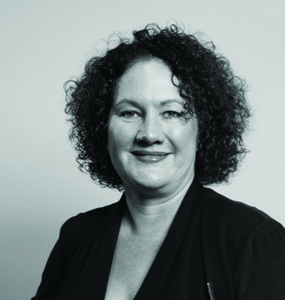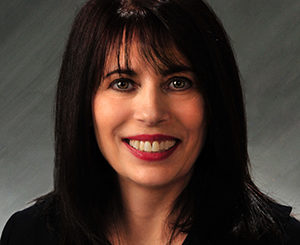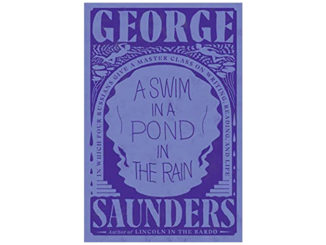
By Kathleen Kindle, Group Strategy Director, Saatchi & Saatchi, Los Angeles, California, kathleen.kindle@saatchi.com
To quote the great scion of advertising, David Ogilvy, from Confessions of an Advertising Man: “The consumer isn’t a moron; she is your wife. You insult her intelligence if you assume that a mere slogan and a few vapid adjectives will persuade her to buy anything. She wants all the information you can give her.”
Slightly sexist language aside (it was the 1960s, after all), Mr. Ogilvy was right about one thing: it’s more important than ever to know what makes consumers tick—why they buy, how they shop, how they behave, and how they consume.
Additionally, given today’s splintered media landscape, it’s doubly important to understand what media they’re engaging with, when, where, why, and how—and with whom they are engaging.
The foundation of any successful advertising campaign lies in a deep understanding of the target audience’s assumptions, opinions, motivations, preferences, and behaviors.
It’s important to get to the heart of how consumers think and behave because it’s the basis for any kind of marketing communication that will actually make a connection with them… and connection with consumers is the holy grail for which advertising strategists and creatives are striving.
Great advertising that is effective is based on insight—a deep intuitive understanding of a person or thing—and, more often than not, these insights are gathered and developed through qualitative researchers. By integrating insights into the creative process, agencies can develop campaigns that resonate more deeply with their audience, leading to higher engagement and conversion rates.
This article looks into the essence of this relationship between advertising agencies and qualitative researchers, highlighting the mutual benefits and exploring the ways in which advertising agencies like to work with qualitative researchers to achieve their goals.
Why Collaboration Matters
![]() Better Creativity: The detailed consumer insights provided by qualitative researchers can inspire new, creative directions and innovative campaign ideas. This fusion of creativity and insight ensures that advertising content is not only captivating but also deeply relevant to the target audience. For many years, my major automotive client has worked with qualitative researchers to employ a unique ethnographic approach to better understand consumers’ media habits and practices. The advertising agency receives a deeper level of insight that leads to unique and more applicable media plans. Relevant messaging is perhaps the most important aspect of marketing communications.
Better Creativity: The detailed consumer insights provided by qualitative researchers can inspire new, creative directions and innovative campaign ideas. This fusion of creativity and insight ensures that advertising content is not only captivating but also deeply relevant to the target audience. For many years, my major automotive client has worked with qualitative researchers to employ a unique ethnographic approach to better understand consumers’ media habits and practices. The advertising agency receives a deeper level of insight that leads to unique and more applicable media plans. Relevant messaging is perhaps the most important aspect of marketing communications.
![]() Work That Works: Campaigns informed by qualitative research are more likely to address the real needs of consumers, making them more effective in achieving marketing objectives. This is particularly crucial in a world where consumers are bombarded with ads and communication everywhere and have become more selective in what they choose to engage with.
Work That Works: Campaigns informed by qualitative research are more likely to address the real needs of consumers, making them more effective in achieving marketing objectives. This is particularly crucial in a world where consumers are bombarded with ads and communication everywhere and have become more selective in what they choose to engage with.
![]() Having More Confidence: Investing in advertising campaigns entails significant risk (to budgets and/or brand and product perceptions), particularly when venturing into new markets or targeting new demographics. Qualitative research helps minimize this risk by providing a clearer picture of the target audience, leading to better decisions and strategies. My packaged goods clients especially value qualitative insights. As a collection of brands that were launching multiple new products into new markets every month, the understanding gathered from qualitative research helped them refine their new product concepts and feel confident about eventual market acceptance.
Having More Confidence: Investing in advertising campaigns entails significant risk (to budgets and/or brand and product perceptions), particularly when venturing into new markets or targeting new demographics. Qualitative research helps minimize this risk by providing a clearer picture of the target audience, leading to better decisions and strategies. My packaged goods clients especially value qualitative insights. As a collection of brands that were launching multiple new products into new markets every month, the understanding gathered from qualitative research helped them refine their new product concepts and feel confident about eventual market acceptance.
![]() Emotional Connection and Loyalty: By demonstrating an understanding of and empathy for their audience’s experiences and needs, brands can build stronger emotional connections with their consumers. My major pet food brand client uncovered a simple truth during qualitative research—if I trust that you love pets like I love pets, I’ll let you feed my pet. It sounds utterly simple—but it was deeply profound and led to the creation of groundbreaking emotional work that is still talked about to this day. Marketers who can demonstrate a deep understanding of their consumers can not only enhance the immediate effectiveness of campaigns but can also build long-term loyalty.
Emotional Connection and Loyalty: By demonstrating an understanding of and empathy for their audience’s experiences and needs, brands can build stronger emotional connections with their consumers. My major pet food brand client uncovered a simple truth during qualitative research—if I trust that you love pets like I love pets, I’ll let you feed my pet. It sounds utterly simple—but it was deeply profound and led to the creation of groundbreaking emotional work that is still talked about to this day. Marketers who can demonstrate a deep understanding of their consumers can not only enhance the immediate effectiveness of campaigns but can also build long-term loyalty.
How Advertising Agencies Like to Work with Qualitative Researchers
Collaboration between advertising agencies and qualitative researchers can take various forms, depending on the project requirements and objectives. It can also depend on how the project is set up from the outset.
Oftentimes, clients are in charge of the relationship—meaning they hire the researchers, and the project is managed by a combination of client and research agency. In other circumstances, the creative agency manages the research relationship. Whatever the nature of the relationship, there are still several ways of working that agencies prefer.
- Get Involved Early and OFTEN. Agencies often prefer to involve qualitative researchers at the outset of the campaign development process. A thorough onboarding at the beginning of the project is important to make sure every party is on the same page… hopefully including the clients. This can take the form of a kick-off meeting arranged by the agency or the clients. Ask questions, detail goals and issues, and get to the heart of the objective of the research. Go beyond forming the discussion guide and instead cement the partnership and understand what the project entails. This early collaboration starts everyone off on the right foot and sets the stage for success.
- Collaborate, Then Collaborate Some MORE. Rather than a one-off consultation, agencies value ongoing collaboration with researchers throughout the project lifecycle. Building on the initial session, what follows should be an open process of sharing information and deliverables, refinement, and eventual learnings. Sometimes, it can even be helpful for the qualitative researcher to act as a sounding board or resource through campaign development, depending on the nature of the relationship. For example, during a project for the major pet food manufacturer referenced above, the qualitative researcher who helped to define the overarching brand strategy for pet food remained as a consultant during the creative phase to help shape the work for this new brand and new brand promise to consumers. In this kind of relationship, all parties helped to iteratively refine the work based on continuous learning and feedback.
- Keep COMMUNICATING. Effective communication is crucial in translating complex research findings into actionable insights. Agencies appreciate researchers who can provide clear, concise, and relevant reports that highlight key insights and their implications for the advertising strategy. It’s not always about the report. I appreciate qualitative partners who can provide immediate insights soon after the project concludes. If you can provide a “top 10 list” or other short form of immediate feedback that can help the agency get going, it’s a giant help!
- Be FLEXIBLE. Things change in advertising—a lot, often, and sometimes unavoidably. More often than I’d like to admit, I’ve experienced massive schedule changes, campaigns that have been scrapped at the last minute, client contacts leaving (sometimes involuntarily) in the middle of development, and other various challenges. Researchers who can adapt quickly to changing project needs and who are willing to explore creative, new, or unproven research methods to uncover fresh insights can help save the day. Agencies are always looking for better, faster, smarter anything when it comes to research projects, so do not be afraid to be innovative in research design, report writing, and more.
- Partner UP. Beyond providing insights, it’s a win when researchers can act as strategic partners, contributing to the overall marketing strategy through their expertise in consumer behavior and market trends. Often, clients are not students of their own brand or industry; they may be unsure of what they need to know, and they’re looking to the agency and researchers for guidance. A nationwide employee benefits provider we worked with had major blind spots in understanding how their consumers perceived their brand. Qualitative research uncovered their customers thought the brand was overly formal, serious, and, therefore, out of touch. The project resulted in a total overhaul of their brand personality, and the eventual advertising took the form of an animated cartoon—a complete 180 degrees from where they had been. The research inspired much more than just the advertising. So, the more that all parties can contribute and work together throughout the project, the stronger and potentially game-changing the results will be.
- Be Invested in the OUTCOME. Many qualitative researchers have expressed that they do not know how their work is used or how it informs the eventual media planning, advertising strategy, creative concepts, and communications product. Once a topline or full report is issued, often they’re out of the project or process and wonder how their work is being applied. The solution to this is to have a conversation! At that crucial kick-off meeting in the beginning, invest yourself in truly understanding how your part of the work will inform the rest of the process. It will make for a better design on the researcher’s part, a better understanding of how the rest should flow and work, and a better wrap-up and delivery of the insights at the end of the research project.
- Follow Up. If you want a better understanding of how your work was used, or specifically how what you delivered influenced the outcome of the project—ask! You’d be surprised at how many partners that I have worked with over the years fail to ask about this part. There’s a definite “well, that’s over and on to the next one” mentality that I see time and time again. The partnership should not end with the final deliverables. My colleagues in the agency and I are more than willing to share how qualitative findings led the way to brand strategy, brief development, target audience understanding, media planning, and eventual creative output. You should feel empowered to ask how your work is being applied. This will only make the design of your next project more creative, actionable, and useful.
 It Can Get Weird
It Can Get Weird
While the collaboration between advertising agencies and qualitative researchers is, for the most part, satisfying and beneficial, it can come with its challenges. Sometimes, we do not speak the same language—so things can get misconstrued. Often, objectives are unclear or change mid-project. Biases can slip through, especially if the agency or researcher has been working on a particular brand or service for a long time. There are ample opportunities for misunderstandings and misalignments. To be the best we can be, everyone on the research project must invest in building a strong, transparent relationship. Regular meetings, clear briefs, and shared goals are crucial for ensuring alignment. Keep things simple. Talk to each other. Agencies and researchers should strive to cultivate a culture of mutual respect where everyone’s expertise has a place at the party.
The Future of Partnership
We believe that as consumer behaviors become more complex and markets more segmented, the role of qualitative research in advertising will only grow. New technology is offering new opportunities for collaboration, with new-ish tools like social media analytics and mobile ethnography providing richer, real-time insights that explain why people do the things they do. As useful and groundbreaking as it is, AI will never replace human interaction and human insight. It can get very close, but creative agencies should always value the power of truly understanding what makes human beings tick. That understanding should make its way to the final product and ultimately reflect back to the consumer their habits and beliefs. As the landscape evolves, it will be important for qualitative researchers to serve as a sherpa of sorts, bringing new solutions and their many applications to the table for agencies and their clients.
In Short
Simply put, agencies and qualitative researchers need each other. It’s the ultimate convergence of art and science, creativity and insight, that informs the creation of meaningful, memorable, and effective communications. Our close partnerships inform campaigns that capture the imagination but also speak to the heart of today’s consumer. As the advertising industry navigates the challenges of the digital age, this partnership offers a pathway to more engaging, effective, and human-centric marketing. It makes advertising better.
Interested in More Qual Tools for Your Toolbox?
Check out this webinar on the Blob Tree, a frequently used projective exercise in qualitative research. Qual researchers love using projective techniques » Learn More Now





